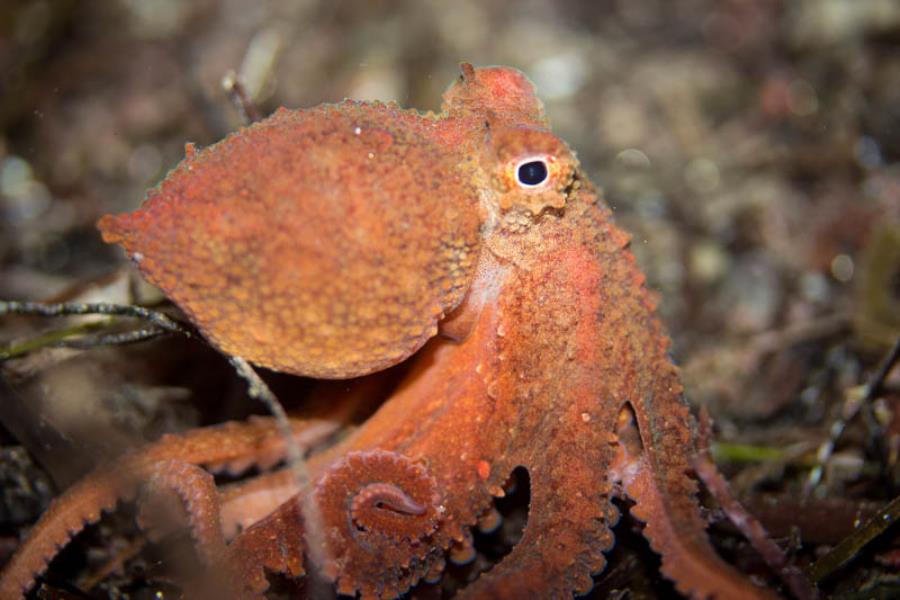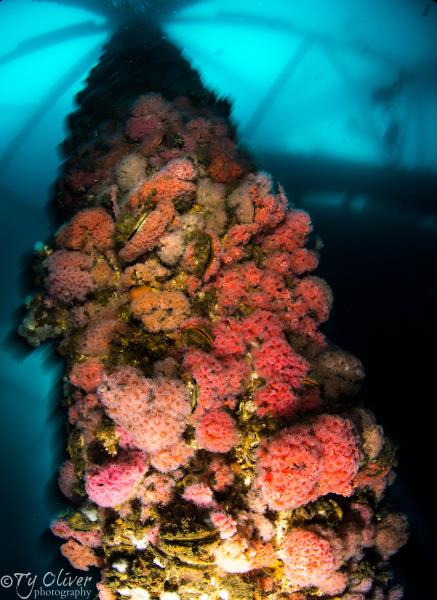 Advice on Scuba Diving in Southern California Coast, United States
Advice on Scuba Diving in Southern California Coast, United States
Part 1: Overview of Scuba Diving in Southern California Coast, (United States)
The Los Angeles County area in southern California is famous for upscale neighborhoods near Beverley Hills or for the bright lights and big egos associated with Hollywood. Knowing divers, most would not relish in the smoggy LA sun for more than a day or two without the inch to explore the Pacific Ocean, ever present on the western horizon. Most tourists visit the Hollywood overlook, dine and shop in LA's many commercial centers and go to the Santa Monica amusement park and pier. There are a lot of things to see in the Los Angeles area, least of all Mickey Mouse in Anaheim just to the south. For the scuba diver the real allure of the LA area lies off the coast, along the not so distant shores of southern California's Channel Islands.
Another hotspot for scuba divers in southern California is down near San Diego, just miles from the Mexican border town of Tijuana. Los Coronados Islands south of San Diego offer warm, clear dive sites. Ship Wreck Alley just off San Diego is famous for its string of sunken vessels and nearby kelp forests.
The waters of southern California are more ideal for scuba diving than northern California primarily because of the warmer water temperatures and in most cases better visibility. Southern California scuba diving is not ideal for shore diving, the high often powerful surf disturbs the bottom creating low visibility more suitable surfing than diving or snorkeling. Once you get the mainland shore and along the shores of the underwater mountains/islands, the diving is spectacular. The cliff at the end of the western world (aka California) has a deep, cold and mysterious feeling when you dive there. All you need is your typical scuba gear, a knife for cutting kelp, a good plan, some reservations with a scuba shop, a sunny day and a long sleeved wet suit or dry suit. The warm California sun will warm your bones once your sipping a margarita on deck after a day of amazing dives.
Part 2: Dive Sites, Marine Life & Environment in Southern California Coast, (United States)
For most, Southern California diving conjures up images of huge, swaying underwater kelp with darting sea lions and the ever present thought of their predators lurching beyond the next tangle of fronds. The Giant kelp is not the only kelp species in the area but it is the most distinct. Growing from its holdfast rooted in the seabed, the largest of all algae extends up to 120 feet to reach the water's surface. Images of sharks cruising around in the kelp beds are notorious but the reality is that you are much more likely to see gentle, and small, horn shark rather than anything deadly or dangerous. The occasional lucky encounter with a blue shark usually ends quickly due to their skid-dish, shy nature around humans. California sheephead and blue rockfish frequent the kelp forests as well as sea urchins and red abalone. The serious danger to divers is the floating canopy of kelp blades that can entangle and panic inexperienced, ill prepared divers. There are specific safety precautions and special dive certifications designed around diving in the kelp forests.
Southern California's Channel Islands are an isolated ecosystem hosting unique species in and out of the water. The area known as the Santa Barbara Channel is famous for migratory whale siting of blue, humpback, fin and other large whales. Divers off the islands find themselves in giant kelp and the land of the sea lions and harbor seals. The area is inhabited by bat rays, blue shark and California moray eels. The islands are also the launching point for amazing scuba diving sites. Wilson Rock 2.2 miles off the northern most island of San Miguel is an underwater mountain whose tip juts out of the water just 20 feet. The dive site follows the submerged rock as it plateaus off several times giving a great dive depth of 35-65 feet to explore the many rock pinnacles and ledges. The ledges are covered with dense life and an invertebrate heaven. The area is famous for the huge anemones such as the flowing snow white tentacled Metridium anemone that can grow up to a meter as well as the cobalt blue sponge prevalent along the rock reefs. The Wilson Rock dive site is for experienced divers due to swift currents and strong surge, steep deep drop offs and extreme changes in visibility.
Water temperatures along the Channel Islands vary, the southern islands can be 10-15 degrees F warmer than the waters along the northern islands. In general, southern California's Pacific waters range from 50-60 degrees F in the winter months up to 60-70 degree F in the summer. The Pacific is much chillier than the Atlantic, Gulf of Mexico or Caribbean like waters off the Florida Keys. Most divers in California don a wet suit or dry suit for warmth. Visibility in the Pacific is also not as exceptionally clear as the warmer, calmer waters of Florida for example. Pacific visibility however can sometimes be exceptionally clear with visibility at 150 feet, however the average visibility in this region of the Pacific is between 40-90 feet.
A warm southern current sweeps over Anacapa Island, a small Channel Island in the more southern reaches of the northern Channel Islands. The warmer temperatures make this a more pleasant dive than the colder more extreme dives off the far northern Channel Islands. Anacapa is a common place for those getting their underwater certification from local dive shops. The island is famous for its thick swaying kelp, leopard sharks and Garibaldis, the state fish of California that looks like a giant goldfish. The furthest Channel Island to the south is San Clemente Island offering protected shear cliffs over run with coral, anemones and sponges. Famous for its clear, relatively warmer waters, San Clemente is nonetheless a tricky dive with its swift currents and tight places sometimes hard to maneuver.
Off the shore of Santa Cruz Island, the largest Channel Island, is a great wreck dive to the USS Peacock. The 100 foot long wooden hulled World War II minesweeper is upright and accessible on the sandy bottom in just 60 feet of water. The wreck is near Scorpion Anchorage and accessible only by boat, it is recommended to go with an experienced dive boat outfit.
Los Coronados Islands just 20 miles south off the coast of San Diego offers dive sites such as Lobster Shack and Keyhole that actually lie in Mexican waters. Both fore mentioned dive sites are in 15-80 feet of water and are known to have great visibility and warm temperatures for the Pacific. Boat excursions the islands dive sites from the San Diego Harbor usually take about 2 hours each way. Scuba diving off the little islands is ideal for both beginners and more technical experienced divers.
About one mile off the coast of San Diego near Mission Bay lies the so called, Wreck Alley. It is a zone of artificial reef composed of six major ships that have been wrecked to create an artificial reef ideal for divers and those seeking technical dive certifications or underwater military training. The chief among the intentionally sunk ships in the alley is the HMCS Yukon, a 366 foot Canadian Destroyer. Other notable wrecks in the alley include the Coast Guard Cutter The Ruby E and the NOSC Tower. The Naval Ocean Systems Center tower rests in 60 feet of water and is the only unintentional wreck in Wreck Alley.
Part 3: Dive Shops, Airports & Logistics of Diving in Southern California Coast, (United States)
The Channel Islands along the Santa Barbara Channel consist of eight islands not far from Los Angeles. The archipelago extends 160 miles north to south along the southern California coastline. Five of the islands make up Channel Islands National Park and Channel Islands National Marine Sanctuary. To get to the islands fly into Los Angeles International Airport (LAX) or the much smaller, open air Santa Barbara Municipal Airport. Most divers fly into LAX, rent a car and head south to the seaside towns of either Ventura or Santa Barbara where you can ferry across to the islands or hire a private boat. There is a small airport on the largest island of Santa Cruz appropriately named the Santa Cruz Island Airport. The airport offers some commercial flights and services small private aircraft. The park is popular and closely protected requiring planning and reservations.
A dive shop that offers 1-day boat excursions as well as custom live aboard diving around the Channel Islands is Truth Aquatics. From April to September the company offers day trips to the popular Painted Cave area off Santa Cruz island. The cave and the surrounding waters are ideal for scuba diving, snorkeling, fishing, stand up paddle boarding and kayaking. Painted Cave is a large partially submerged cave that is fun and save to explore. Truth Aquatics also offers 2-3 day excursions to the islands with food and drinks provided.
Channel Island Scuba is the oldest Scuba facility in Ventura County. The small dive shop is based out of Thousand Oaks, a slightly inland town between LA and Santa Barbara. The shop specializes in small, personalized scuba classes for all levels of certification. Channel Island Scuba is also a great retail source for state of the art scuba gear and underwater photography equipment.
Eco Dive Center is a large dive shop out of Los Angeles that frequents most of the Channel Islands as well as dive sites throughout southern California. The experienced, home based outfitter Channel Islands Dive Adventures (CIDA) is a example of a dive company concerned specifically with the Channel Islands. CIDA is unique because it is not a retail “dive shop” but more a scuba association focusing on excursions to the Channel Islands to explore not only the dive sites but also the islands history, science and preservation.
Farther south in San Diego, the one boat dive shop Waterhorse Charters accesses Wreck Alley, the artificial reef just one mile offshore from Mission Bay. Waterhorse Charters also frequents Los Coronados Islands, small islands to the south of the city in Mexican territory. Another company out of San Diego, Lois Ann Dive Charters caters to divers interested in the many ship wrecks along Wreck Alley and the Point Loma Kelp Beds nearby. Flying into San Diego International Airport is the best way to get to the dive sites off the far southern shores of California.
---- Book Your Diving ----
Fill in the Form Below.
Our hand picked regional partners will deliver no obligation quotes.

Tweets by @DiveAdvisorApp





















